Echoes Of Laurel Canyon - Part Thirteen
CIA Choices - Overthrow Guatemala Or Los Angeles?
My fundamental premise of this series of “Echoes Of Laurel Canyon” is that the CIA has always viewed the 34,000 square miles of Greater Los Angeles as a small, Central American country like Guatemala. That’s the fundamental premise of this series, which I call “Operation Hollywood.”
Detailed summary
This installment of “Echoes of Laurel Canyon” argues that the Central Intelligence Agency (CIA) treated the 34,000-square-mile cultural powerhouse of Greater Los Angeles as if it were a pliable Cold-War client state—“Operation Hollywood.”
George Webb at Lookout Mountain Air Force Base in Los Angeles Laurel Canyon neighborhood.
From 1947, the classified Lookout Mountain Air Force Station in Laurel Canyon produced thousands of government films while the CIA pressured studios to pivot overnight from World-War-II patriotism to anti-Soviet messaging; those who refused were hauled before the repurposed House Un-American Activities Committee and black-listed between 1948 and 1953. WikipediaWikipedia
Richard Nixon was the first politician to make a name for himself in the House Un-American Activities Committee.
With Dwight Eisenhower’s 1953 election, Allen Dulles took the CIA helm and his brother John Foster Dulles became Secretary of State, creating a tightly coupled intelligence–diplomatic axis.
The pair’s lightning-fast nine-day coup in Guatemala in 1954 demonstrated the new model: covert action first, presidential notification later. Hollywood quickly amplified the lesson with air-power epics such as Jet Pilot and, after the Sputnik shock, missile melodramas like Rocket Attack, laying cultural groundwork for massive weapons budgets. Wikipedia
A core security clique—Insall Bailey Hale, Mason Lankford, Max Clark and CIA operations chief Richard Bissell—leveraged the manufactured “missile gap” to channel funds to General Dynamics/General Atomics.
Their prize was the Atlas-65, the United States’ first operational inter-continental ballistic missile and later a NASA launch workhorse whose lineage still flies on United Launch Alliance boosters scheduled to loft Boeing’s Starliner. WikipediaWikipediaWikipedia
Air-Force strategist Curtis LeMay, backed by Hap Arnold and aerodynamicist Theodore von Kármán, championed both long-range bombers and ICBMs while RAND Corporation in Santa Monica gamed out thermonuclear scenarios—work that filtered into films like Dr. Strangelove and Fail Safe.
LeMay’s Los Angeles retirement in 1965 intertwined military influence with Hollywood myth-making, aided by figures such as Reeve Whitson of Manson-era surveillance fame. WikipediaJacobinRAND Corporation
Above this cinematic surface, Bissell launched the TALENT–KEYHOLE compartment and the CORONA/Keyhole satellite series—an Above-Top-Secret Special Access Program created to answer Sputnik. The author contends that the closed “Corona club” later became a deniable apparatus for state-sanctioned assassinations tied to the Hale family, exemplifying how Cold-War technical projects fused with covert-action politics. CIAWikipedia
People
Allen Dulles – Director of Central Intelligence (1953-61), Dulles professionalized covert action and signed off on the 1954 Guatemala coup that became a template for regime change. He encouraged Hollywood propaganda through CIA’s Office of Policy Coordination, seeing narrative control as a strategic weapon. Dulles also approved Richard Bissell’s U-2, CORONA, and Bay-of-Pigs projects, tightly coupling technology with clandestine operations. His Cold-War interventions made him one of the most powerful unelected figures of the Eisenhower era. WikipediaThe Space Review
John Foster Dulles – As Secretary of State (1953-59) he institutionalized “massive retaliation” diplomacy and worked in lock-step with his brother Allen to integrate CIA covert action with foreign policy. His ideological anticommunism informed State-Department backing for Hollywood’s anti-Soviet messaging campaigns. Dulles oversaw alliances such as SEATO meant to encircle the USSR and China. Historians view him as a principal architect of early-Cold-War U.S. strategy. Office of the Historian
Dwight D. Eisenhower – The 34th U.S. president delegated broad latitude to the Dulles brothers while warning of a rising “military-industrial complex” in 1961. He authorized the CIA’s CORONA program after Sputnik to regain technical intelligence parity. Eisenhower also sanctioned psychological warfare budgets that flowed to Hollywood and Lookout Mountain. His administrative style enabled covert action to flourish beneath a public consensus for containment. WikipediaWikipedia
Insall Bailey (“I.B.”) Hale – Ex-FBI agent turned chief of security at Convair and General Dynamics, Hale managed classified missile work in Fort Worth and later Dallas. He was a close Hoover confidant and chaired ASIS International, giving him unusual reach across government and industry security circles. Researchers link Hale to hiring Lee Harvey Oswald at Jaggers-Chiles-Stovall and setting the Dallas motorcade route, suggesting deep interface with covert networks. Hale’s twin sons Robert Allen and William figure in later allegations of deniable operations. Wikipedia
Mason Lankford – A Fort Worth fire marshal and Director of Security for General Dynamics/Convair, Lankford worked with IB Hale on safeguarding Atlas missile plants. Local archives note his close coordination with federal agencies during the intense secrecy of missile production. Conspiracy researchers place him in the same Dallas security milieu that shaped events surrounding the JFK assassination. Though little known publicly, his role exemplifies how municipal officials meshed with Cold-War defense secrecy. Find a Grave
Max Clark – Former General Dynamics industrial-security officer, Clark testified to the Warren Commission about security practices and IB Hale’s circle. His duties entailed vetting personnel with high-level clearances at the Fort Worth and San Diego missile facilities. Clark’s deposition revealed frequent liaison with FBI and CIA contacts, underscoring the corporate-intelligence fusion of the period. His low profile belies influence over who could access sensitive ICBM data. History Matters
Richard M. Bissell Jr. – As CIA Deputy Director for Plans, Bissell ran the U-2, Bay of Pigs, and CORONA projects, calling himself a “man-eating shark.” He built the TALENT-KEYHOLE security system that walled off satellite imagery from normal oversight. Bissell’s emphasis on technical espionage merged with a “health-alteration” committee that explored lethal covert action, linking surveillance with assassination capability. His management style became a model for black-budget programs that persist today. CIAThe Space Review
John F. Kennedy – The 35th president opposed “missile gap” alarmism during his 1960 campaign yet inherited both the rhetoric and the secret programs it spawned. He confronted Bissell over the failed Bay of Pigs and later vowed to “splinter the CIA,” heightening tension with agency hard-liners. Kennedy’s 1963 Dallas motorcade—along a route reportedly influenced by General-Dynamics security alumni—ended in assassination, fueling decades of speculation. The event cemented fears that covert networks could override elected authority. Wikipedia
Roger Krone – An aerospace executive who spent early career years at General Dynamics before leading Boeing Network & Space Systems and chairing United Launch Alliance, Krone exemplifies the post-Cold-War continuity of the Atlas launch family. His later tenure as CEO of Leidos keeps him at the nexus of defense contracting and intelligence services. Under Krone’s leadership, ULA rockets derived from Atlas have carried both commercial and classified payloads. He thus bridges the missile-age legacy with present-day space commerce. House DocumentsWikipedia
General Curtis LeMay – Architect of strategic bombing in World War II, LeMay later commanded Strategic Air Command and promoted a robust ICBM and bomber triad. His reputation for aggressive nuclear doctrines inspired the fictional Gen. Jack D. Ripper in Dr. Strangelove. After retiring to Riverside County in 1965, he advised RAND Corporation war-games and mingled with Hollywood insiders like Reeve Whitson. LeMay’s public persona personified Cold-War brinkmanship even as movies satirized it. Wikipedia
General Henry “Hap” Arnold – The only U.S. Air-Force five-star general, Arnold championed air-power research during and after WWII. He sponsored RAND’s 1946 satellite study and encouraged ICBM development to complement bomber fleets. Arnold’s mentorship shaped successors like LeMay and brought scientists such as von Kármán into Air-Force planning. His legacy endures in the Air-Force’s emphasis on technological supremacy. RAND Corporation
Theodore von Kármán – Hungarian-American aerodynamicist who chaired the Scientific Advisory Board, von Kármán authored pioneering air-power reports for Arnold. He advocated missiles and satellites as essential to future warfare, influencing RAND’s early space studies. His theoretical work underpinned supersonic aircraft and rocket designs. Von Kármán thus linked academic physics to Cold-War weapons programs. RAND Corporation
Reeve Whitson – A shadowy intelligence asset who inserted himself into the Sharon Tate murder investigation, Whitson maintained friendships with LeMay and other security elites. Researchers suggest he monitored counterculture figures in Laurel Canyon under Above-Top-Secret clearances. His presence at multiple clandestine junctures fuels speculation about Hollywood–intelligence overlap. Whitson embodies the “operator” class that blurred policing, espionage, and entertainment. Jacobin
Ayn Rand – The novelist-philosopher drafted an anticommunist atomic-bomb screenplay in 1945 for producer Hal Wallis, beating MGM in the rush to dramatize nuclear weapons. Studio politics shelved her script, but its hard-line ideology foreshadowed Rand’s later Objectivist polemics. Hollywood finally revisited the theme in 2023 with Oppenheimer, echoing debates Rand raised about science and individualism. Her brief screenwriting stint shows how Cold-War narratives attracted ideological authors. Literary Hub
James R. Killian Jr. – President of MIT and Eisenhower’s first Special Assistant for Science and Technology, Killian chaired the Technological Capabilities Panel that urged satellites like CORONA. Though not a military general, he coordinated Air-Force–CIA science programs and advised on compartmented security. Killian’s leadership eased cooperation between academia and black projects. His role exemplifies civilian stewardship of early space reconnaissance. Smithsonian Magazine
Organizations & Programs
Central Intelligence Agency (CIA) – Created by the 1947 National Security Act, the CIA coordinates foreign intelligence and conducts covert action. After WWII it penetrated Hollywood via propaganda offices and later ran CORONA, KH satellites and the Bay of Pigs invasion. Under Allen Dulles the agency fused psychological warfare with regime-change operations from Guatemala to Laos. Its secret budgets shaped much of the military-entertainment complex described in this series. CIA
Hollywood film industry (“Hollywood”) – The U.S. motion-picture center produced WWII propaganda and swiftly pivoted to anti-Soviet themes when federal funding and blacklists pressured studios. During the Cold War, aerospace films like Jet Pilot and Strategic Air Command promoted air-power narratives aligned with Pentagon spending. Lookout Mountain officers provided classified footage and technical advisors, deepening dependency on government contracts. Hollywood thus became a venue where national-security messaging was laundered as popular entertainment. WikipediaWikipedia
Lookout Mountain Air Force Station – Hidden in Laurel Canyon, this 1947-69 USAF facility shot over 6,500 secret government films, including atomic-test reels and training movies. Its staff of 250 cleared civilians and military technicians formed a turnkey propaganda studio for the Defense Department and CIA. Classified budgets enabled quick response to shifting propaganda needs, from Soviet threats to space triumphs. The base’s legacy survives in cultural myths about Laurel Canyon’s uncanny military presence. Wikipedia
House Un-American Activities Committee (HUAC) – A Congressional panel that subpoenaed and jailed entertainment figures who resisted naming alleged communists, institutionalizing the Hollywood Blacklist between 1947 and 1953. HUAC hearings coerced studio compliance with anticommunist scripts and destroyed dissident careers. The committee thereby acted as the punitive arm complementing CIA influence operations in Hollywood. Although HUAC waned after 1975, its chilling effect defined mid-century cultural boundaries. Time
U.S. State Department – Under John Foster Dulles, State coordinated diplomatic cover and legal immunity for CIA covert operations worldwide. The department channeled cultural-exchange funds and export licenses for propaganda films. Its embassy networks facilitated global distribution of Hollywood anticommunist features. State thus extended Operation Hollywood beyond domestic audiences. Office of the Historian
General Dynamics – A major defense contractor that absorbed Convair, it built the Atlas ICBM at plants secured by IB Hale and colleagues. The company’s Fort Worth division became a nucleus for missile-age secrecy and, by some accounts, covert political activity in Dallas. General Dynamics later spun out General Atomics, diversifying into nuclear technologies. Its long partnership with CIA space projects shows how private firms underpinned classified programs. Wikipedia
General Atomics – Founded in 1955 as a General Dynamics subsidiary, GA pursued advanced nuclear reactors and later unmanned aerial vehicles. Its lineage traces to Atlas missile profits and Cold-War R&D. Today GA’s Predator drones exemplify the fusion of aerospace, surveillance, and covert strike capabilities foreshadowed in early missile programs. The company embodies the enduring business model of weaponized innovation. Wikipedia
RAND Corporation – Created in 1946 to retain wartime scientific talent, RAND devised the first public satellite study and pioneered nuclear-deterrence theory. During the 1950s-60s it hosted Bissell’s Keyhole brainstorming and LeMay’s strategic-bombing games. RAND staff coined concepts later dramatized in films such as Fail Safe. Its analytic methods still guide U.S. security policy. RAND Corporation
Soviet Union (USSR) – America’s principal Cold-War adversary, the USSR’s 1957 Sputnik launch triggered the U.S. satellite and missile buildup. Hollywood films portrayed Soviets as technological but de-humanized villains, justifying U.S. weapons expansion. The perceived “missile gap” with the USSR drove funding for Atlas, Polaris, and Keyhole. Soviet achievements therefore shaped both real strategy and cinematic narrative arcs. Wikipedia
United States Air Force (USAF) – Split from the Army in 1947, the USAF oversaw Strategic Air Command, ICBM forces, and joint spy-satellite projects. It supplied crews, funding, and classified footage to Lookout Mountain and later shared TALENT-KEYHOLE control with CIA. Generals Arnold, LeMay, and related technocrats forged the doctrine showcased in post-war aviation cinema. The service remains central to U.S. space launch infrastructure. Wikipedia
United Launch Alliance (ULA) – Formed in 2006 as a Boeing-Lockheed joint venture, ULA inherited the Atlas-V family derived from the Atlas-65 ICBM. Its rockets launch national-security satellites, sustaining the missile lineage first championed by IB Hale and RAND planners. Board chair Roger Krone has kept the company aligned with both NASA and intelligence-community needs. ULA illustrates private-sector stewardship of Cold-War technology into the 21st century. House DocumentsULA
Boeing – An aerospace giant that managed Network & Space Systems under Roger Krone and co-owns ULA, Boeing is prime contractor for the Starliner crew capsule slated to ride an Atlas V. The company’s roots in bomber production made it a natural partner for Air-Force missile spin-offs. Boeing’s current portfolio spans commercial aviation to spy-satellite buses, reflecting Cold-War diversification. Its continuity underscores the long shadow of Operation Hollywood’s militarized narratives. House DocumentsAP News
NASA – Founded in 1958, NASA adopted modified Atlas boosters for Mercury, Gemini and unmanned lunar probes, transforming a weapon into a symbol of peaceful exploration. Agency contracts kept Atlas production alive after military demand leveled off. NASA’s public-relations films, sometimes processed at Lookout Mountain, further blurred lines between propaganda and science education. The agency thus benefited directly from missile-age Hollywood synergism. NASA
Metro-Goldwyn-Mayer (MGM) – The studio rushed out The Beginning or the End in 1947, dramatizing the Manhattan Project without CIA oversight. Its early foray triggered competition with Paramount and later inspired renewed interest in nuclear dramas culminating in Oppenheimer (2023). MGM cooperated with Pentagon liaisons on subsequent aviation pictures. The studio’s output charts Hollywood’s evolving alignment with national-security themes. IMDb
Paramount Pictures – Paramount optioned Ayn Rand’s atomic-bomb script in 1945 but dropped it amid policy squabbles, illustrating how studio decisions were shaped by emerging Cold-War politics. Paramount later produced air-combat and spy thrillers in collaboration with Defense Department offices. The studio’s archives reveal extensive script vetting by military advisers. Paramount showcases the mutual dependence of filmmakers and government image-crafting. Literary Hub
CORONA spy-satellite program – Initiated in 1958 under the WS-117L umbrella, CORONA used film-return capsules to map Soviet missile sites, ending the “missile gap” myth once and for all. Managed jointly by CIA (Bissell) and Air Force, it was hidden behind the unclassified “Discoverer” cover story. CORONA established the TALENT-KEYHOLE compartment that persists in modern overhead reconnaissance. The program’s secrecy mechanisms later migrated to special-access kinetic operations. WikipediaNational Reconnaissance Office
Keyhole (KH) satellites – Numbered KH-1 through KH-11, the Keyhole series extended CORONA’s lineage with ever-higher resolution, shifting from film buckets to real-time digital imaging. TALENT-KEYHOLE clearances restricted access to a tiny cadre, supporting the author’s claim of an exclusive covert-action club. KH imagery informed both military targeting and cinematic depictions of “eye-in-the-sky” surveillance. The brand remains shorthand for U.S. strategic reconnaissance. National Security Archive
Government of Guatemala (1954) – Jacobo Árbenz’s democratically elected administration was overthrown by CIA-backed forces in “Operation PBSUCCESS,” a nine-day campaign framed as anti-communist liberation. This intervention became the prototype for narrative-driven coups promoted via newsreels and later dramatized in film. The swift operation showed Washington how compelling media accompaniment could sanitize regime change. Guatemala’s fate serves as the article’s baseline comparison for CIA treatment of Los Angeles. Wikipedia
Nazi Germany – Captured V-2 engineers and heavy-lift rocket designs, transferred to the U.S. under Operation Paperclip, seeded American ICBM programs such as Atlas. Hollywood’s early Cold-War films reframed former Nazi technology as heroic American aerospace engineering. The article notes CIA and industry figures leveraging this legacy to justify missile investment. Thus Nazi rocketry provided both technical and narrative fuel for Operation Hollywood. Wikipedia
These profiles collectively illustrate how a tight network of intelligence officials, defense contractors, military strategists, and studio executives turned the dream-factory of Los Angeles into a perpetual staging ground for America’s Cold-War—and post-Cold-War—stories of threat, technology, and power.
Introduction
From its very inception, the CIA had far more to gain in overthrowing the Hollywood hierarchy than small countries in Central America, given the fact that almost all war propaganda was produced there in World War II.
Suppose the CIA was going to sell the American public on the idea that our former Allies of the Soviet Union of a few days before now represented the greatest threat to our Democratic way of life. In that case, Hollywood would need to get busy on that task. And Hollywood directors, writers, and producers responded almost overnight, given the same checks that Lookout Mountain Air Force Base in Laurel Canyon was writing.
And to those directors, writers, and studio bosses who wouldn’t fall in line, I have documented the House UnAmerican Activities Committee being repurposed in 1948 for the purpose of public humiliation and career destruction until 1953. After 1953 and the election of President Eisenhower, Allen Dulles sailed into power at the CIA, and his brother John Foster Dulles took the helm at the US State Department, the soon-to-be covert, diplomatic immunity-protected arm of the CIA.
In 1954, the Dulles Brothers overthrew the democratically elected government of Guatemala in nine days, barely bothering to tell President Eisenhower until the Coup was over. Hollywood movie propaganda shifted to how military power, especially in aviation, was the only way to keep the Red Menace in check. The ICBMs of IB Hale of General Dynamics/General Atomics were not yet the heroes of the Cold War. The individual jet pilot, like John Wayne in “Jet Pilot,” was still the focus of Hollywood.
The Dulles Communist propaganda war of 1955 to 1961 instead chose to focus on the Russian “leadership” in ICBMs versus brave American jet pilots countering the Soviet humanless onslaught of ICBMs. In the 1960 movie, “Rocket Attack,” an American Secret Agent thwarts all-out Soviet ICBM launch.
The ICBM abbreviation for Inter-Continental Ballistic Missile had not yet entered the American parlance, and IB Hale and his CIA backers with Nazi heavy lift rocket technology would have to wait for Hollywood to catch to popularize the demand for their ICBMs.
IB Hale and all the same General Dynamics “Security” insiders like Mason Lankford and Max Clark with their CIA backers like Richard Bissell, the same core group that would plan the shooting pen route of John F. Kennedy’s visit to Dallas in 1963, were the primary beneficiaries of the Cold War rhetoric around the “Missile Gap.”
https://www.thespacereview.com/article/523/1
The first American ICBM, the Atlas-65, with its variants, would go on to be the workhorse of NASA and Richard Bissell’s protege, Roger Krone, at United Launch Alliance. They are still in use today with the upcoming Boeing Starliner launch.
Air Force General Curtis LeMay would be the major proponent, along with General Hap Arnold and advisor Theodore Von Karmen, to maintain superiority in long-range bombers and ICBMs.
Interestingly, when General Curtis LeMay retired to Riverside County in California, he had a strong friendship with Reeve Whitson, of surveillance on the Sharon Tate slaughter pen fame. Could the Above-Top Secret status of Laurel Canyon’s Lookout Mountain fuel a new generation of pro-missile and pro-bomber movies in Hollywood?
Certainly, the most famous characterization of Air Force General Curtis LeMay came in 1964’s Dr. Strangelove, a movie about the absurdities of surviving nuclear warfare. General LeMay obviously disapproved of this war-mongering portrayal of his career.
But movies like Dr. Strangelove and Fail Safe gave the American public a window into nuclear war negotiations and real-time decision-making never seen before, with concepts like the “Big Board” showing missiles in flight.
We will continue to explore General LeMay’s role in the movies made after Dr. Strangelove in 1964, LeMay’s retirement in Los Angeles in 1965, and his continued associations with the Rand Corporation in Santa Monica, which conducted nuclear war gaming during this era of the Cold War.
https://www.rand.org/about/history.html
CIA Deputy Director Richard Bissell’s Keyhole Satellite was born at RAND Corporation.
Hollywood’s first race to tell the story of the Atomic Bomb was a race between MGM and Paramount, with hard-liner Anti-Communist Ayn Rand writing the script.
https://www.thedailybeast.com/when-ayn-rands-wild-top-secret-atomic-bomb-movie-lost-its-way
Hollywood finally made Ayn Rand’s 1945 movie last year with “Oppenheimer.” The MGM movie, ominously called “The Beginning Or The End.”, was the last “unmonitored” movie of the new Cold War as the CIA was just forming up.
This early movie was about America’s race for the atomic bomb against the Nazis. Word soon would come down from Lookout Mountain Air Force Base in Laurel Canyon that the new enemy was Russia.
Notes -
A fundamental thesis of my series called “Echoes of Laurel Canyon” is that America, in its kneejerk reaction to the Sputnik satellite program, created an Above top-secret secure access program (SAP) that was called the Corona Project.
You can see clearly from historical records that Richard Bissell of the CIA was the key driver of this project. you can see clearly from historical records that Richard Bissell of the CIA was the key driver of this project. He also is the founder of the health alteration committee by his own words.he is also the founder of the “health alteration committee”, by his own words, a euphemism if there ever was one. And Richard Bissell called himself the man eating shark, hardly a description for a man just taking pictures from space.
Richard Bissell was the driver of the Corona program and Air Force General Killian worked directly for him for Bissell’s every order.
This project featured a very few people with a right or need to know the utmost secrecy to construct a satellite program that would answer the new Soviet capability from space.
My fundamental thesis of this series is that the corona program has been reused again and again, because of its exclusive club of top-secret participants, to carry out not only surveillance but also state sanctioned assassinations beginning with IB Hale, his son Robert Allen Hale, and his twin brother William Hale .


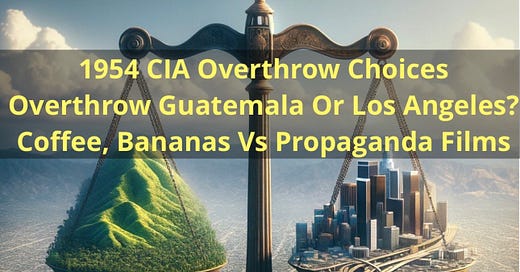





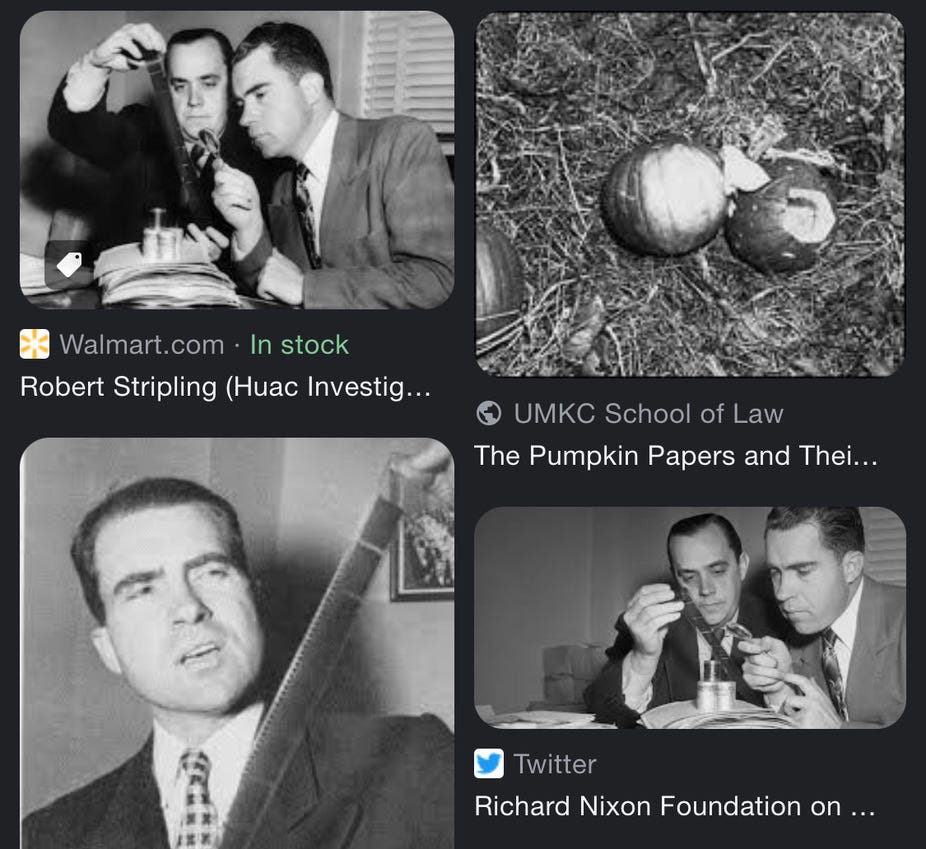






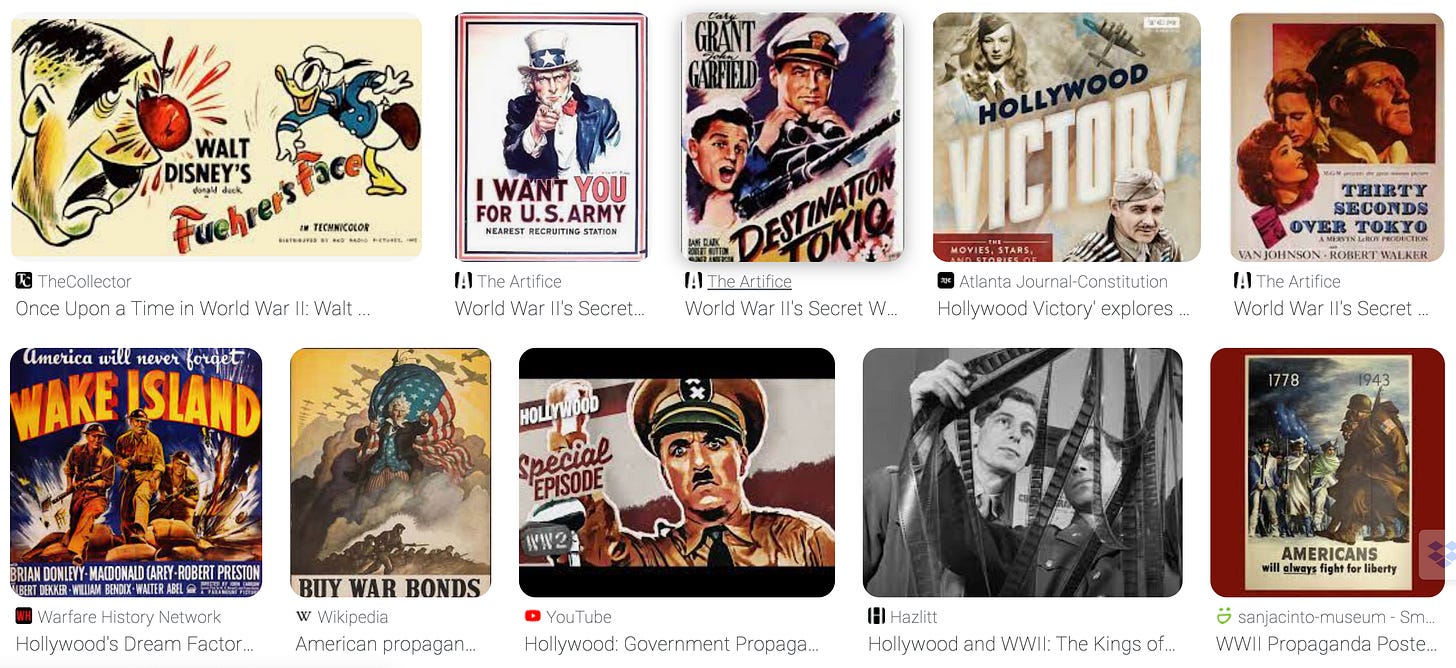








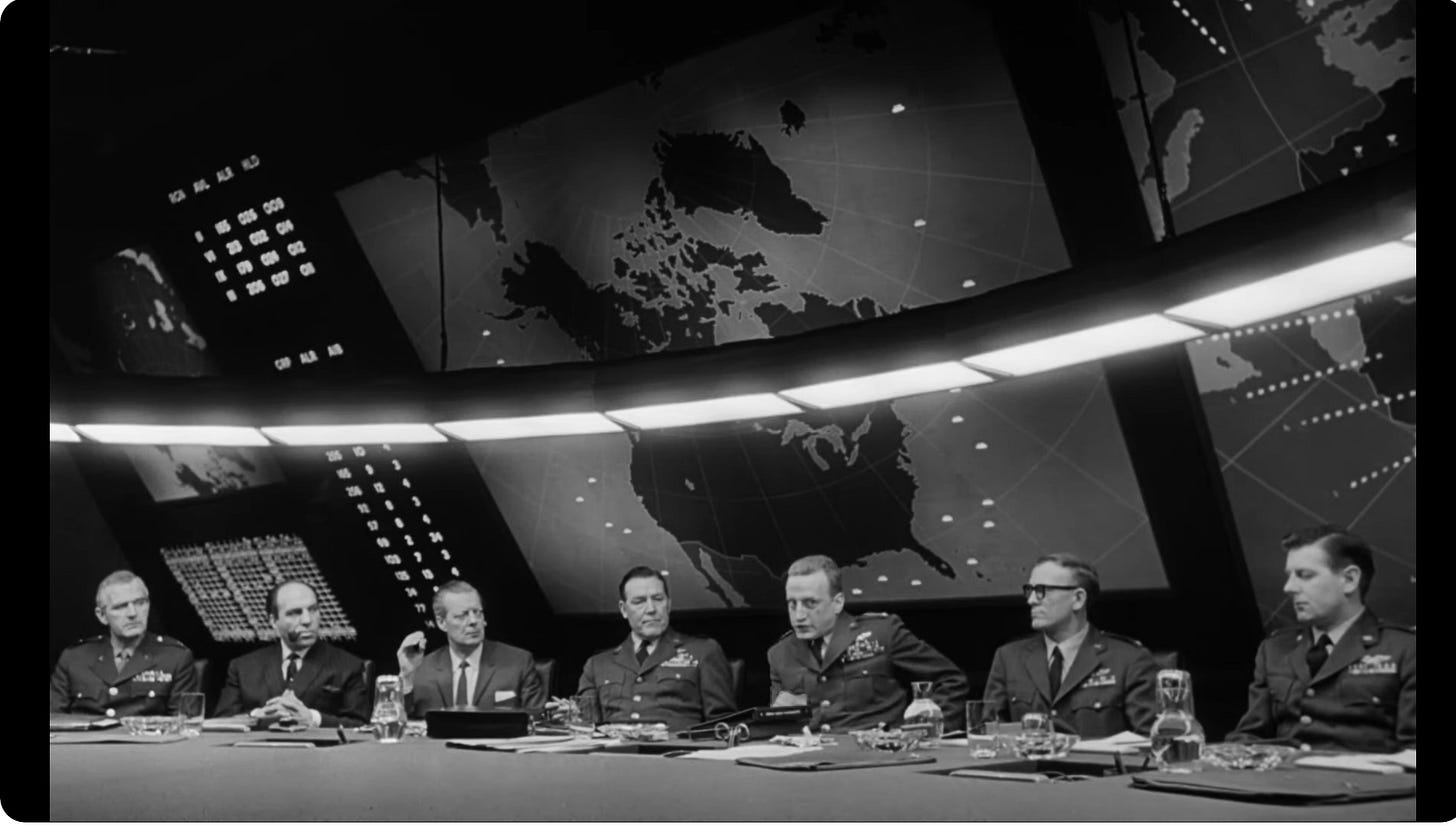


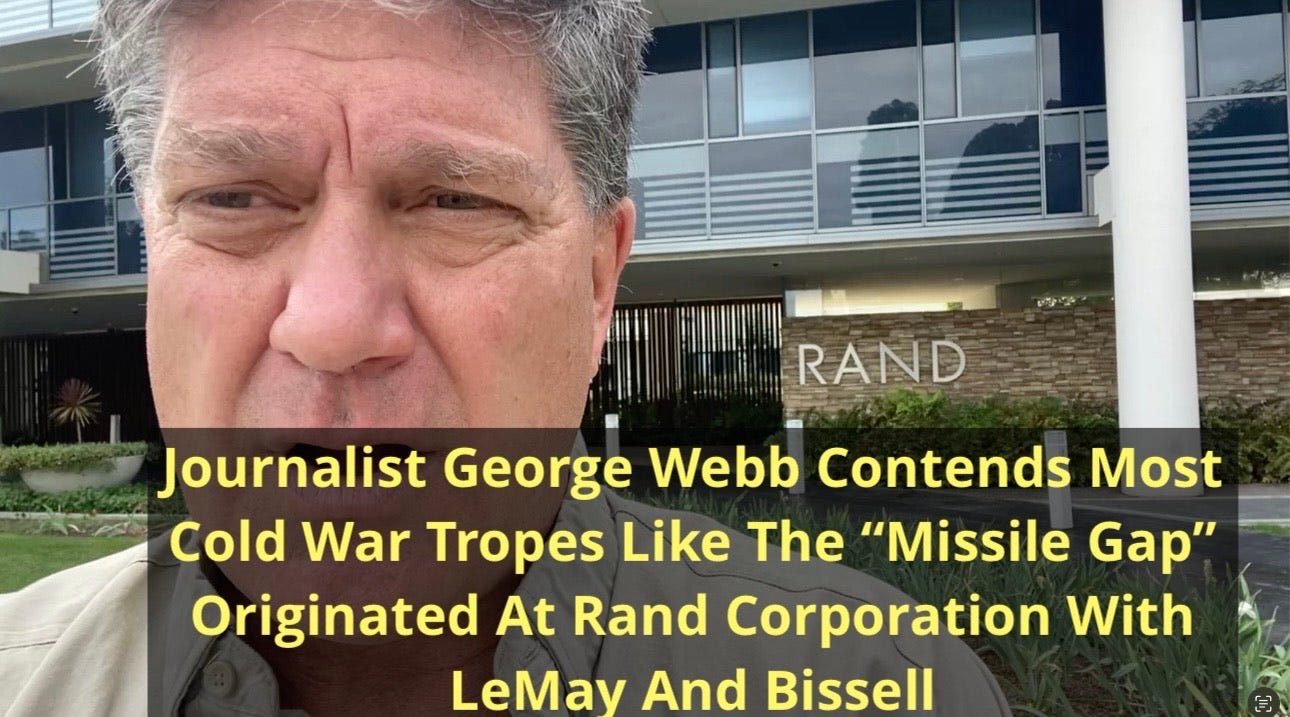
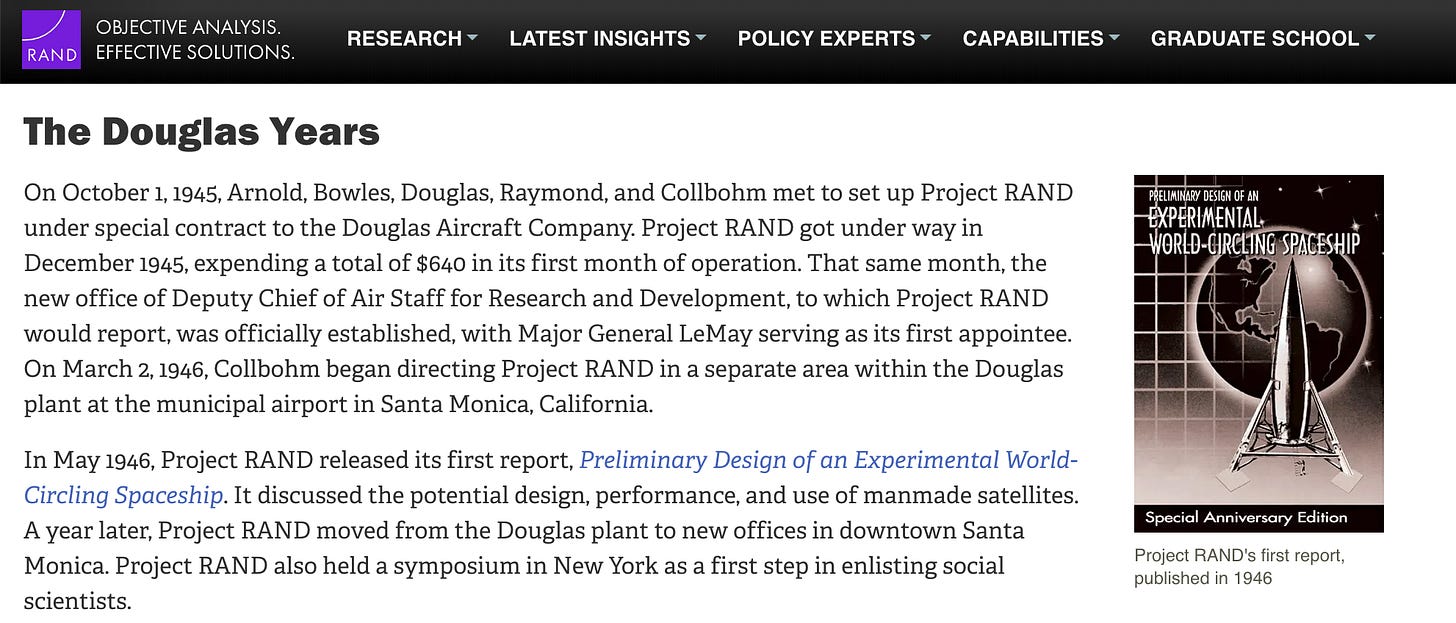



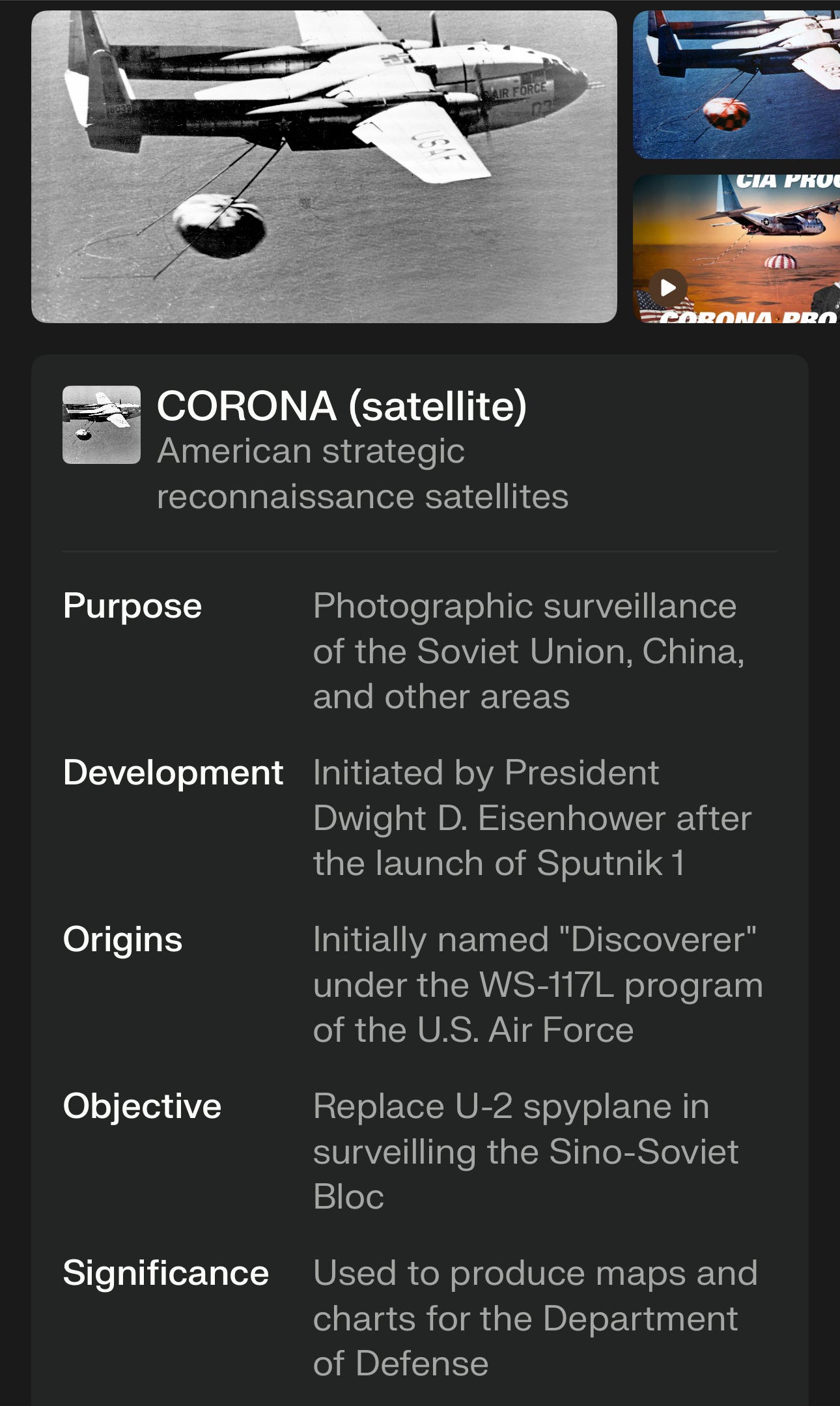
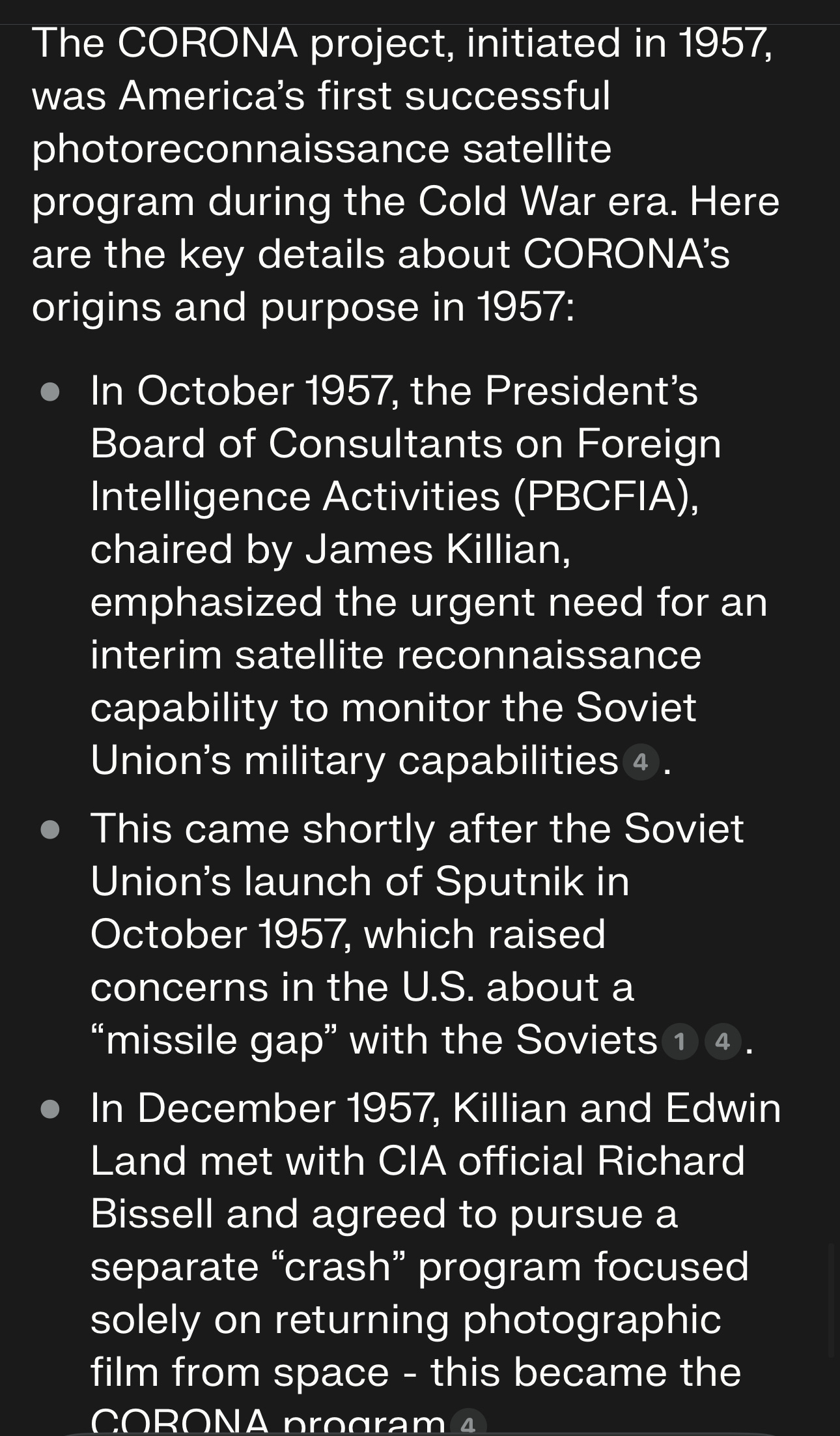
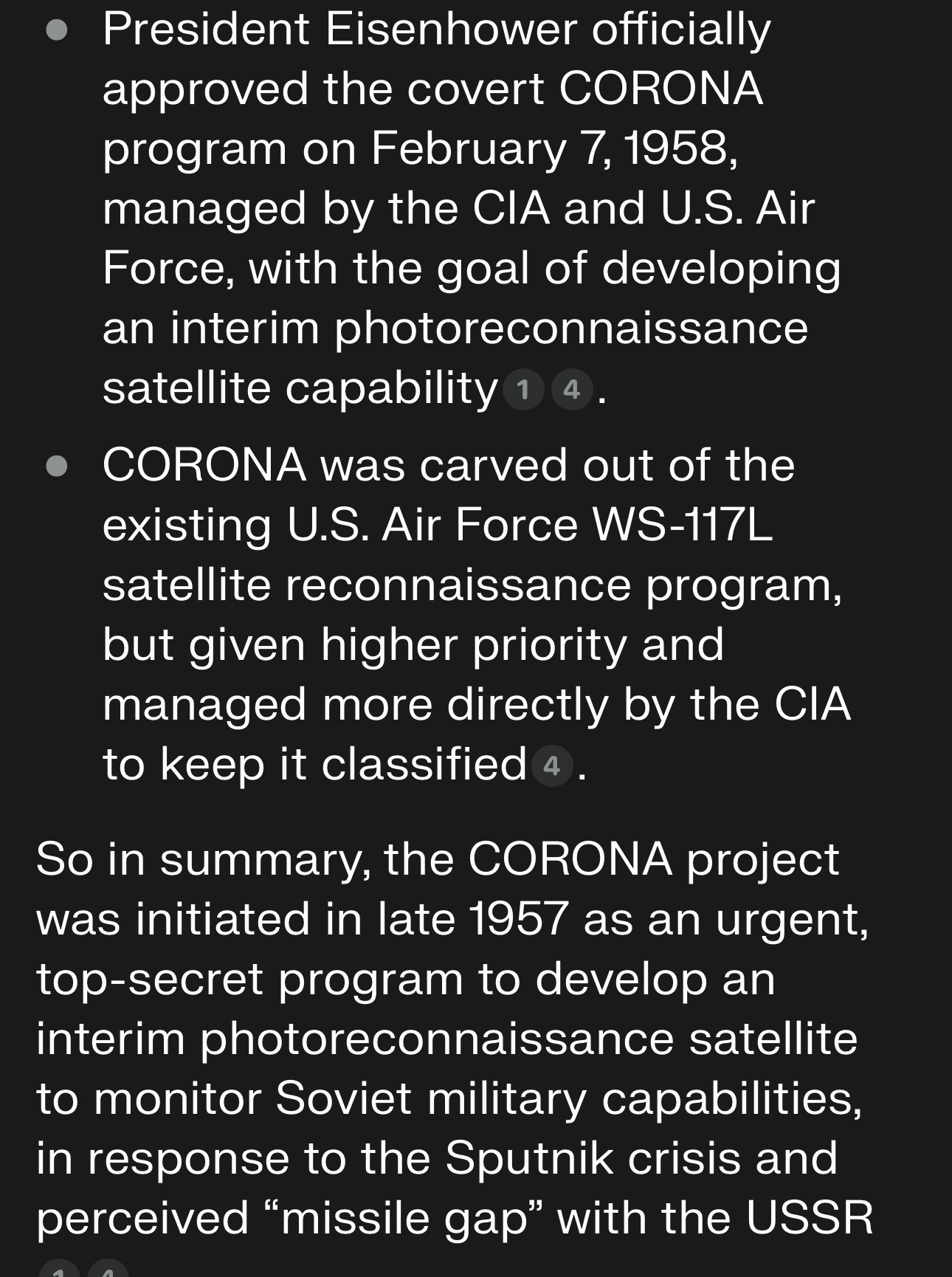
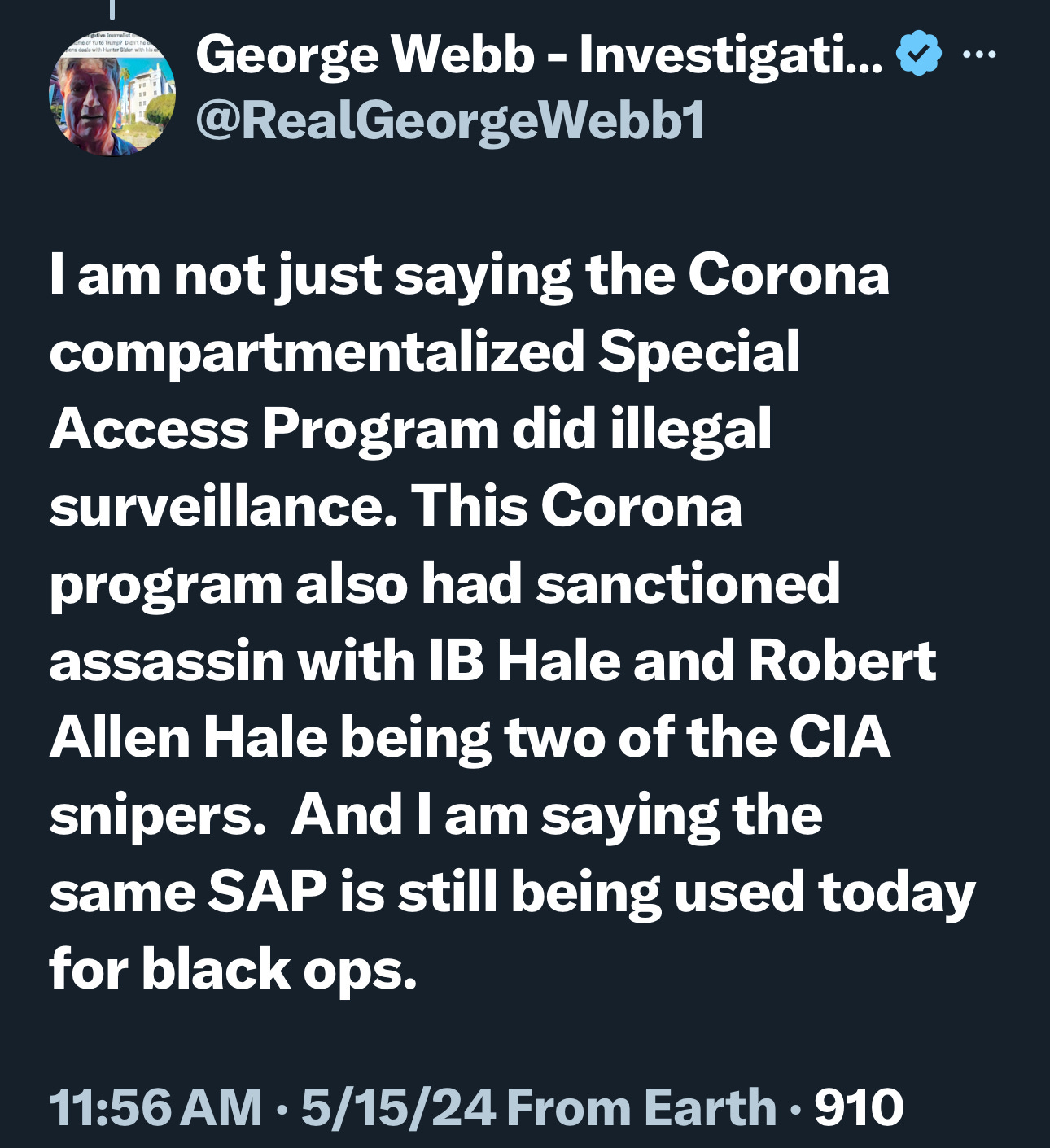
Thank you George. The Dulles Bros took emphasis away from the Nazis infiltrating our government, intel community, and national laboratories. Now all we still hear is "Russia, Russia, Russia."
The late great Christopher Story, of worldreoprts.org fame, once reported on a document he found in the British Museum, originally recovered in Berlin after WW II. It stated, "We will build the Fourth Reich on the ruins of the United States."
Their descendants are doing a damn good job of it so far.
January 17, 1893 a group of Greedy business men with the assistance of the US Navy overthrows the Hawaiian Monarchy, (the sovereign Kingdom of Hawaii).